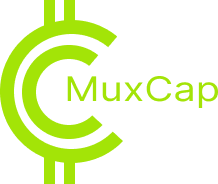Cryptocurrency investors are constantly seeking the best strategies for maximizing their returns, and two popular methods—staking and trading—offer different approaches to growing your crypto assets. Both strategies have the potential for significant returns, but they also come with varying levels of risk, involvement, and long-term prospects.
In this article, we will compare crypto staking and trading, examining the advantages and disadvantages of each to help investors determine which strategy might be best for long-term gains.
What is Crypto Staking?
Crypto staking is a process where investors lock up a certain amount of their cryptocurrency in a blockchain network to help support its operations, such as validating transactions and securing the network. In return for staking their tokens, participants are rewarded with additional cryptocurrency, typically paid out in the same token they are staking.
Staking is primarily associated with proof-of-stake (PoS) or delegated proof-of-stake (DPoS) blockchain networks, such as Ethereum 2.0, Cardano (ADA), Solana (SOL), and Polkadot (DOT). The more tokens a user stakes, the higher their chance of being selected to validate transactions and earn rewards.
What is Crypto Trading?
Crypto trading involves buying and selling cryptocurrencies to profit from price movements. Unlike staking, which relies on holding and locking up assets, trading is an active strategy that requires analyzing market trends, price charts, and economic factors to make informed buying and selling decisions. Traders use different approaches, such as day trading, swing trading, or long-term investing, depending on their goals and time horizon.
The Pros and Cons of Crypto Staking
Pros:
- Passive Income One of the biggest advantages of staking is the ability to earn passive income. Investors who stake their tokens can earn a relatively steady stream of rewards without having to actively manage their portfolio or make frequent trades. This can be particularly appealing for those looking for a hands-off approach to growing their crypto assets.
- Lower Risk Staking typically involves holding and locking up your assets, which means that you are not exposed to the same level of market volatility as trading. Although the price of the staked token can fluctuate, the staking process itself is relatively stable, with rewards being issued periodically. This makes staking a less risky strategy for conservative investors seeking long-term gains.
- Network Contribution By staking tokens, participants are directly contributing to the security and decentralization of the blockchain network. This can provide a sense of purpose for those who want to be actively involved in supporting the underlying technology behind their investments.
Cons:
- Limited Liquidity Staking often requires locking up your tokens for a specified period, during which time you may not have immediate access to your funds. Some networks may impose lock-up periods of several days, weeks, or even months. This lack of liquidity can be a disadvantage if you need to sell or move your assets during market fluctuations or emergencies.
- Price Volatility While staking can generate steady returns, it does not protect you from the price volatility of the token itself. If the value of the cryptocurrency you are staking drops significantly, the rewards you earn may not offset the decrease in the asset’s value.
- Inflationary Pressure Some staking networks have inflationary mechanisms where new tokens are created to pay staking rewards. This can lead to inflationary pressure on the token, potentially diluting its value over time if the demand does not match the increased supply.

The Pros and Cons of Crypto Trading
Pros:
- Higher Profit Potential Trading offers the potential for higher returns compared to staking, especially for active traders who are skilled at analyzing market trends and timing their trades effectively. By buying low and selling high, traders can capitalize on short-term price movements and potentially earn significant profits.
- Liquidity and Flexibility Unlike staking, trading offers full liquidity. Traders can buy and sell assets whenever they choose, allowing for greater flexibility in managing their portfolio. This liquidity is particularly important during times of market volatility when traders need to act quickly to avoid losses or capture profits.
- Diverse Strategies Trading allows for a wide range of strategies, including day trading, swing trading, and long-term holding. This flexibility enables investors to choose the approach that best suits their risk tolerance, time commitment, and market outlook.
Cons:
- High Risk Trading cryptocurrencies is inherently risky due to the market’s extreme volatility. Prices can fluctuate dramatically in a short period, leading to significant losses if trades are not timed well. Active trading requires constant monitoring of the market and a deep understanding of technical analysis, making it a challenging and stressful strategy for beginners.
- Time-Consuming Successful trading demands constant attention and quick decision-making. Traders need to analyze charts, follow news events, and adjust their strategies frequently to stay ahead of the market. For those without the time or expertise, trading can be overwhelming and lead to costly mistakes.
- Emotional Challenges Trading can be emotionally taxing, especially when faced with losses or unpredictable market movements. Traders may experience fear of missing out (FOMO), panic selling, or overconfidence after a winning streak, all of which can negatively impact their long-term success.
Which Strategy is Best for Long-Term Gains?
Crypto Staking for Long-Term Investors
For investors who prefer a hands-off, low-risk approach, staking is a better option for long-term gains. Staking provides consistent rewards over time and allows participants to earn passive income without the need to actively manage their investments. Additionally, staking allows investors to contribute to the network’s health and security while benefiting from potential price appreciation in the long run.
Staking is ideal for those who believe in the long-term potential of a particular blockchain and are willing to lock up their tokens for extended periods. However, investors must be cautious about price volatility and potential inflationary pressure on the staked tokens.
Crypto Trading for Active and Experienced Investors
For more experienced investors with a high-risk tolerance, trading offers the potential for larger profits, especially in volatile markets. Active traders can take advantage of price swings and market trends, maximizing their returns by buying and selling at opportune moments. However, the risks are higher, and success requires significant time, effort, and knowledge.
Trading is better suited for those who are comfortable with market analysis, can dedicate time to monitoring the market, and are willing to manage the emotional ups and downs of price fluctuations.
Conclusion
Both crypto staking and trading have their own advantages and drawbacks, and the best strategy ultimately depends on the individual investor’s goals, risk tolerance, and level of experience. For those seeking a more passive, low-risk approach with consistent rewards, staking is an excellent option. On the other hand, active traders with a high-risk appetite and the ability to navigate volatile markets may find greater profit potential through trading.
In the end, many investors choose to combine both strategies—staking a portion of their portfolio for long-term passive income while actively trading another portion to capitalize on short-term opportunities. By balancing these approaches, investors can take advantage of both stability and growth in the ever-evolving cryptocurrency market.erent types of indices and their methodologies, you can better navigate the complexities of the stock market and optimize your investment portfolio.
Expand your trading horizons with MuxCap’s global market access.
Popular Posts
- Understanding Stock Market Indicators: Key Metrics for Successful Trading and Investment

- Exploring the World of Crypto Futures and Options: Strategies & Risks

- How Leverage Works in Forex and Futures Markets: Opportunities and Pitfalls

- Algorithmic Trading in the Stock Market: The Future of Automated Investing


























